Shopping Experiences Before and During the Pandemic
During the COVID-19 pandemic, many countries experienced a lockdown. All non-essential businesses were temporarily closed, which included clothing stores. Although essential stores, such as grocery stores, remained open, their policies drastically changed. It is difficult to remember a time where we did not need to wear masks to enter a store, line up to buy groceries, or had to show proof of vaccination to eat at a restaurant.

Disposable & Discretionary Income
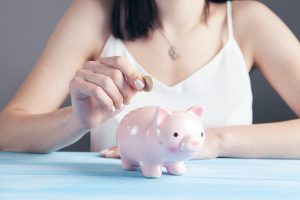 Before the pandemic, I barely shopped online. However, that quickly changed. Fortunately, I did not lose my job during this time and maintained a decent disposable and discretionary income. Disposable income is “the amount of money we have leftover to invest, save, or spend, after paying personal income taxes” (Niosi, 2021), whereas discretionary income includes necessities (Niosi, 2021). In other words, I was able to purchase necessities such as PPE and continue buying items I desired, such as a Mackage jacket.
Before the pandemic, I barely shopped online. However, that quickly changed. Fortunately, I did not lose my job during this time and maintained a decent disposable and discretionary income. Disposable income is “the amount of money we have leftover to invest, save, or spend, after paying personal income taxes” (Niosi, 2021), whereas discretionary income includes necessities (Niosi, 2021). In other words, I was able to purchase necessities such as PPE and continue buying items I desired, such as a Mackage jacket.
Hedonic Shopping
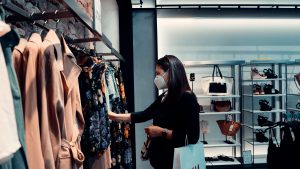 Although online shopping proved convenient and easy at the height of the pandemic, I missed the hedonic shopping experience. This type of shopping experience involves “enjoyment, excitement, captivation, and escapism from everyday life” (Niosi, 2021). Visiting Metrotown shopping mall and browsing through its many retail stores has always helped me to relieve stress. Often, I would go shopping with friends or my family: finding unexpected deals on desired items was always exciting and satisfying.
Although online shopping proved convenient and easy at the height of the pandemic, I missed the hedonic shopping experience. This type of shopping experience involves “enjoyment, excitement, captivation, and escapism from everyday life” (Niosi, 2021). Visiting Metrotown shopping mall and browsing through its many retail stores has always helped me to relieve stress. Often, I would go shopping with friends or my family: finding unexpected deals on desired items was always exciting and satisfying.
Attitudes & Lifestyle
Attitude is the long-lasting evaluation (positive or negative) that we have towards people and things (Niosi, 2021). The change from in-store to online did not change my attitude toward shopping itself. Throughout the transition, I maintained a positive and favourable attitude towards shopping. According to the ABC’s of Attitudes, the affective (how we feel), behavioural (how we act), and cognitive (our thoughts and beliefs) components are equivalent for a positive attitude. In other words, these three components remained aligned to maintain my positive attitude.
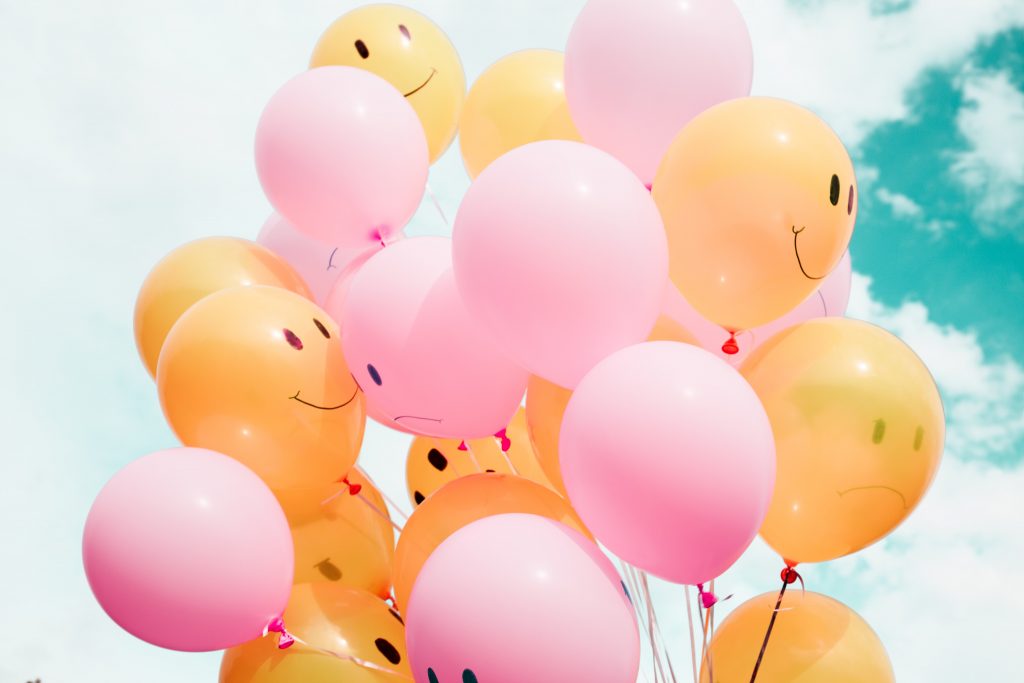
From grocery to clothing stores, retail shopping plays a huge role in my lifestyle. Lifestyle refers to our attitudes, interests, and opinions (Niosi, 2021). As mentioned, I have a positive attitude toward shopping. My interest level varies depending on the product or brand. For example, during the pandemic, I gained a greater interest in health supplements, such as Vitamin C and Zinc. My opinion on shopping is also dependent on the product or brand. For instance, retail shopping is essential unless we grow our foods or sew our clothing.
Atmospherics
One of the other factors I missed about moving from in-store shopping to online was not being immersed in a retail store’s atmospherics. This concept refers to the physical aspects, such as music, lighting, and colour, that affect our decision-making (Niosi, 2021). Typically, I find that if a store plays music I liked, I will spend more time browsing and looking around. Consequently, if I enjoyed my time in a store, I am much more likely to make a purchase.
For example, I really enjoy the atmospherics of Aritzia. Here are just a few that influence my shopping experience:
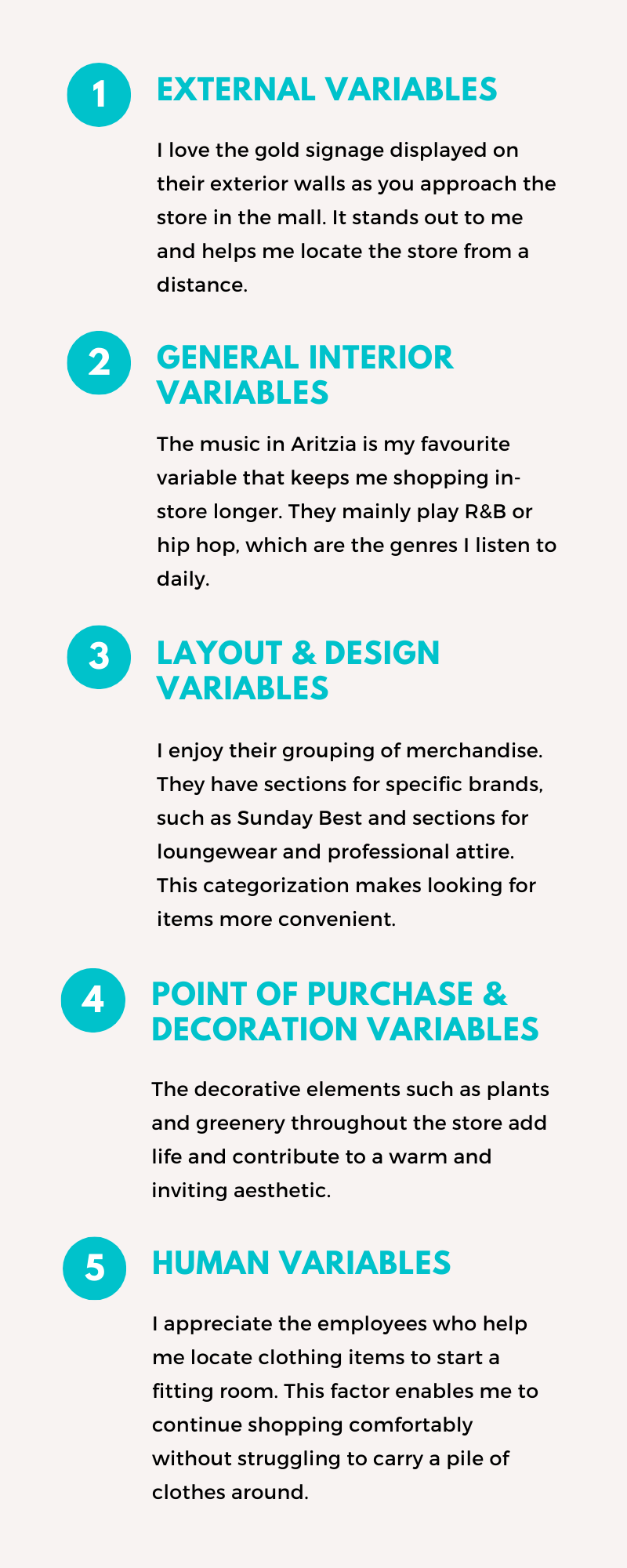
Naturally, online shopping doesn’t replicate the in-store experience and therefore the atmospherics have less influence on me as a consumer. However, this decisional factor is not present in online shopping.
Heuristics
As I began to engage in more online shopping, I discovered that I rely on more “mental shortcuts” to help me make decisions. Heuristics – the concept used to describe mental shortcuts – helps consumers simplify the decision-making process (Niosi, 2021). Some retail sites, such as Sephora, carry many different brands and products: while browsing, I always find new items that I add to my cart. However, I only end up purchasing a few products (these few items are my regularly used skincare and make-up products). Since I am unable to sample products in-store, I tend to stick to those most familiar to me: as such, my go-to heuristics focus on saving me money, time, and effort.
Heuristics can take on many different forms, these are a few that I’ve used in different consumer contexts:
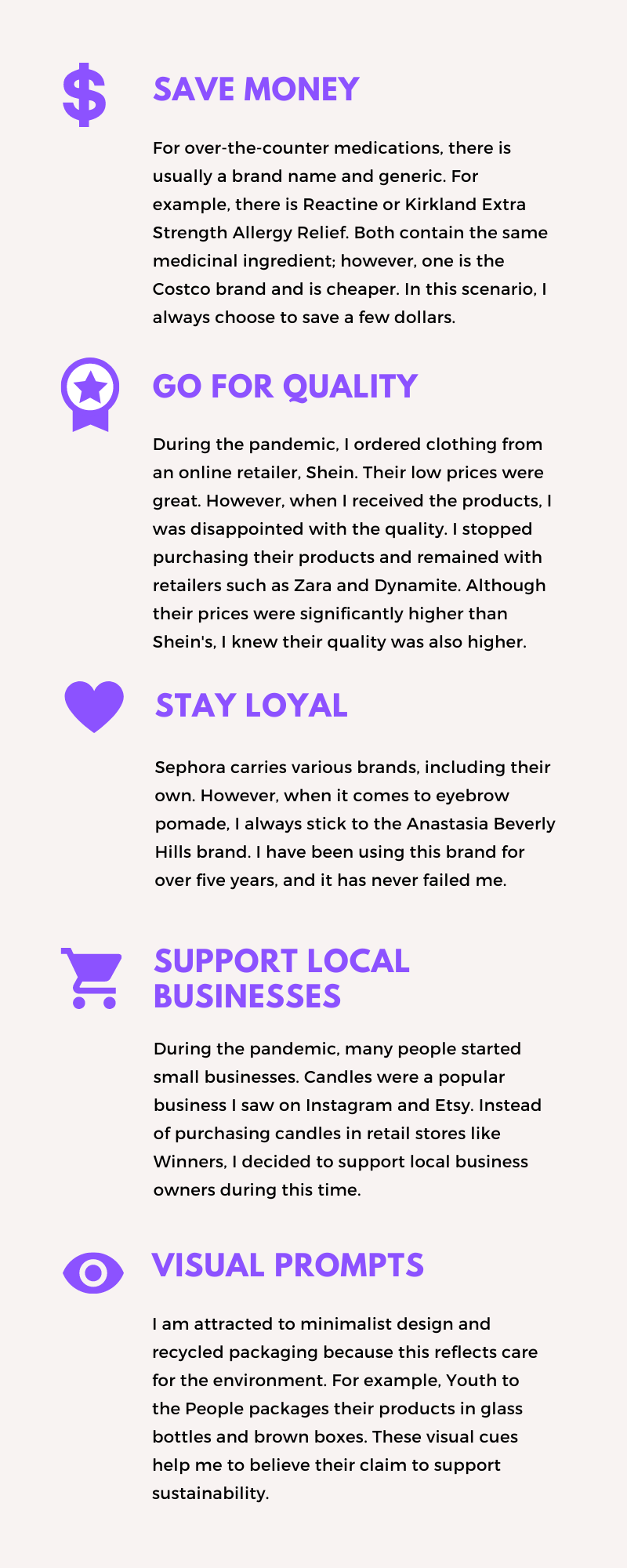
Crowding
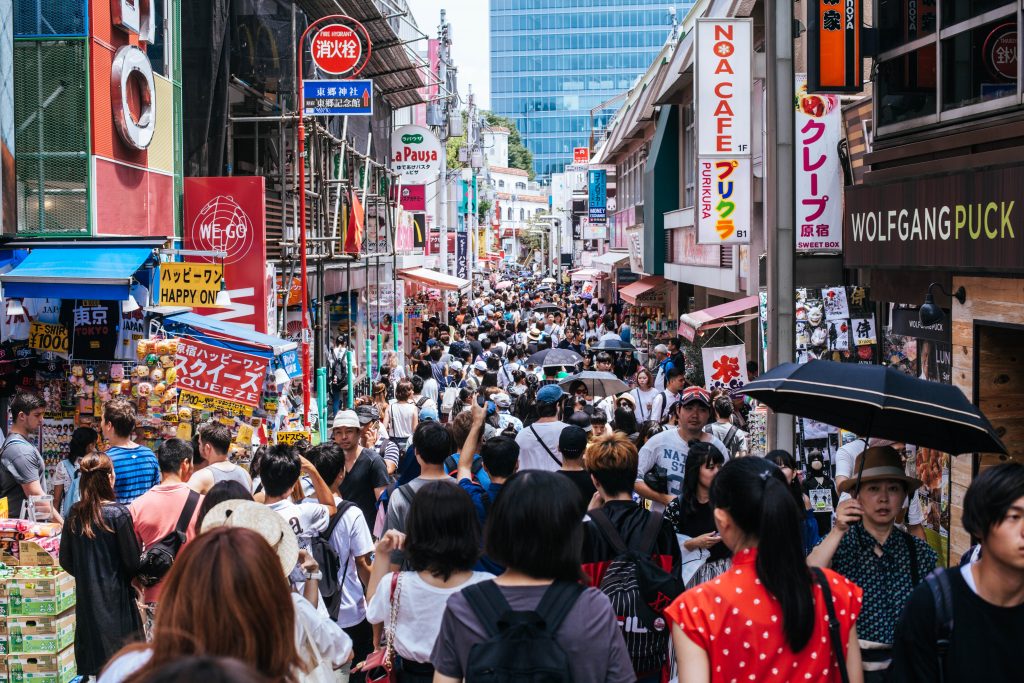 When stores finally reopened, the shopping experience changed with a clear focus on practicing important safety precautions: line-ups; temperature checks; and, hand sanitizing stations became common and expected fixtures in most if not all stores. Due to the pandemic and shopping capacity limits, I have not found myself in a busy store lately. Personally, it has been nice not to experience being pushed around or bumped into when shopping. Crowding influences our decision-making (Niosi, 2021). It can result in more or fewer buyers (Niosi,2021). When a store is overcrowded, visitors may become frustrated and abandon the item they wanted to buy. Alternatively, some customers may become greatly influenced to take their time shopping and buy more. This may be the result of observing other shoppers purchasing a desired item. Due to the lack of in-store crowding, I have felt more at ease to look around the entire store and purchase items. Before the capacity limit, crowded stores would frustrate me and often result in me leaving empty handed.
When stores finally reopened, the shopping experience changed with a clear focus on practicing important safety precautions: line-ups; temperature checks; and, hand sanitizing stations became common and expected fixtures in most if not all stores. Due to the pandemic and shopping capacity limits, I have not found myself in a busy store lately. Personally, it has been nice not to experience being pushed around or bumped into when shopping. Crowding influences our decision-making (Niosi, 2021). It can result in more or fewer buyers (Niosi,2021). When a store is overcrowded, visitors may become frustrated and abandon the item they wanted to buy. Alternatively, some customers may become greatly influenced to take their time shopping and buy more. This may be the result of observing other shoppers purchasing a desired item. Due to the lack of in-store crowding, I have felt more at ease to look around the entire store and purchase items. Before the capacity limit, crowded stores would frustrate me and often result in me leaving empty handed.
Despite the changes, the pandemic did not alter my attitude or habits toward shopping. Take the personality quiz below to find out what type of shopper you may be!
- Do you make repeat purchases from a specific brand?
Yes
No - Do you tend to spontaneously purchase items?
Yes
No - Do you bring reusable bags for shopping?
Yes
No - Is recyclable packaging important to you?
Yes
No - Do you purchase products from your own country because you view them as better?
Yes
No - Do you usually go shopping for enjoyment or to fulfill a need?
Enjoyment
To fulfill a need - Is supporting brands from your country important to you?
Yes
No - When you need allergy medication, do you buy your usual brand? Or do you consider alternatives?
Usual brand
Consider alternatives
By Victoria Ly (December, 2021)
Media Attributions
- The photo of the business closed due to the pandemic is by Anastasiia Chepinska on Unsplash.
- The photo of the piggy bank is by Sasun Bughdaryan on Unsplash.
- The photo of the lady shopping in-store is by Arturo Rey on Unsplash.
- The photo of balloons is by Hybrid on Unsplash.
- The photo of the crowd is by Kvnga on Unsplash.
Text Attributions
Niosi, A. (2021). Introduction to Consumer Behaviour. Licensed under CC BY-NC-SA-4.0.
the amount of money we have leftover to invest, save, or spend, after paying personal income taxes.
where customers experience enjoyment, excitement, captivation, and escapism from everyday life.
the long-lasting evaluation (positive or negative) that we have towards people and things.
refers to our attitudes, interests, and opinions.
concept used to describe mental shortcuts.
when there are many individuals in a given area which can either encourage or discourage shopping.

